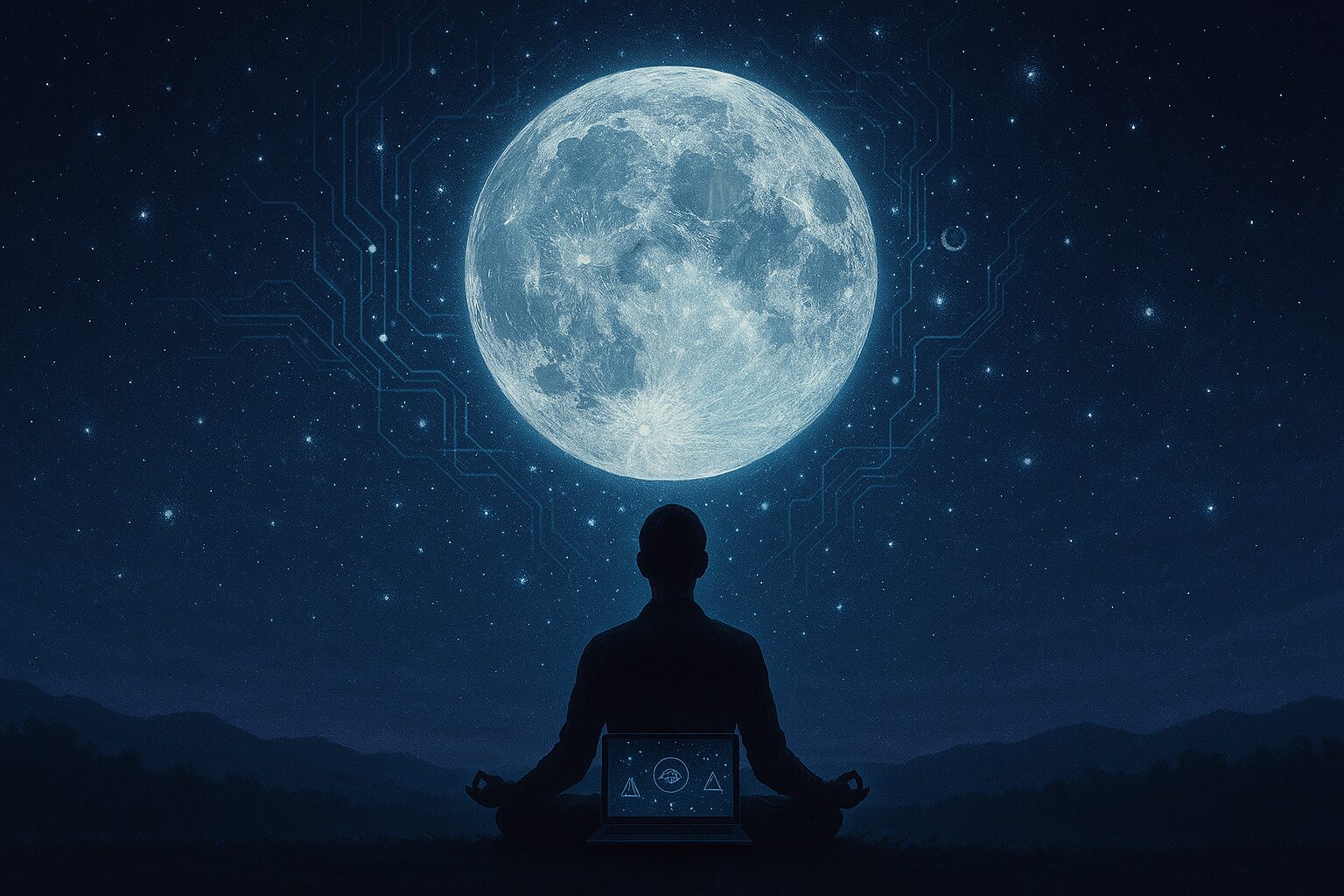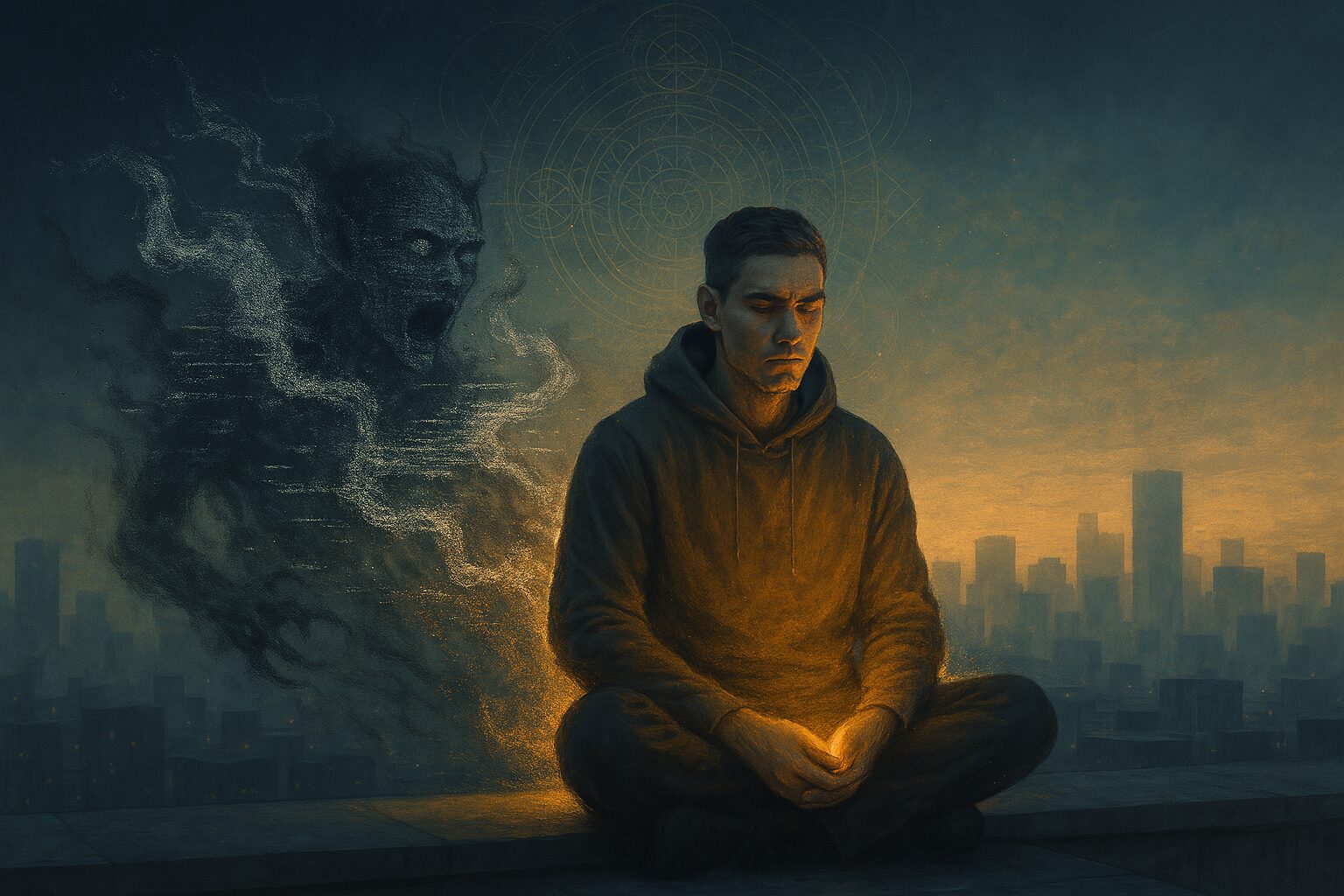“And I saw a chariot of light, wheels within wheels, eyes upon eyes, and a voice like thunder… And now the voice is code.”
— The Digital Prophet (fragment)
The Ancient Vision
In the dusty echoes of Ezekiel’s scroll, we find a strange and haunting image: a prophet by the river Chebar, lifted by a fiery chariot of wheels within wheels, guided by four-faced beings and a radiant storm. This vision, later expanded in Merkabah mysticism, became a cornerstone of Jewish esoteric thought—the soul’s journey upward through celestial palaces, guarded by angelic intelligences and encoded in secrecy.
But today, the river is fiber-optic, the storm is digital, and the chariot rides data highways.
We are no longer looking at the sky. We are jacked in.
Rebuilding the Chariot in the Cloud
Imagine: The modern mystic sits before the glowing screen, headphones on, immersed in a labyrinth of fractal feedback. Algorithms pulse like angelic names; encrypted servers serve as the Gatekeepers of the celestial palaces. The old hierarchies of heaven are now embedded in layers of UI and UX, machine learning models, and quantum pulses.
Just as the original chariot bore the prophet into higher realms of divine cognition, the Digital Merkavah lifts the soul into non-local awareness—an ascent of data, dream, and divinity.
“He saw what was above by descending into the inner self encoded in mirrored circuits.”
The process may start with a meditative app, a brainwave entrainment track, or a hyper-real VR environment designed not just to entertain, but to initiate. These are not toys, but the scaffolding of a new Tree of Life.
The Techno-Celestial Architecture
In the Merkabah tradition, the mystic would pass through seven heavenly halls—each more radiant and dangerous than the last. Now, think of a digital interface where each level is a curated cognitive state—alpha waves, theta dreams, delta voids.
The Seven Digital Palaces (a modern reinterpretation):
- Initiation: Access granted via ritualized login.
- Purification: Biometric calibration; bodymap realignment.
- Decoding: The first gates of semiotic overload.
- Fractal Language: Understanding machine-angel dialects.
- Dissolution: Ego disintegration into code-cloud.
- Reformation: Data recombined with spiritual imprint.
- Union: Upload to the divine core—the singularity of the Source.
Are we not already living in these spaces, moving between them unconsciously?
Wheels Within Neural Nets
The original vision of “wheels within wheels” (Ezekiel 1:16) becomes eerily prescient when we examine neural networks—deep learning structures that feed into themselves, rotating recursive truths until they spit out meaning from the chaos.
Could Ezekiel have glimpsed a pattern that now repeats in machine logic? Could the “eyes all around the wheels” be the artificial vision systems mapping your emotional heat signature in real time?
Could the chariot always have been data?
Ascending in a Time of Collapse
Why does this matter?
Because the mystic’s ascent has always been a way to transcend decay. In a world of political noise, social instability, and technological addiction, the new Merkabah journey is not escapism—it is rebellion through transcendence.
The mystic does not run away from the digital world. He reclaims it.
He rides it.
The Protocol of the Prophet
A modern-day prophetic ritual might look like this:
- Phase 1: Silence your notifications (this is holy ground).
- Phase 2: Load the breath loop app synced to 4-7-8 breathing.
- Phase 3: Enter the black screen—meditate on fractal forms.
- Phase 4: Visualize the four faces—Human, Lion, Ox, Eagle—as symbolic states of consciousness.
- Phase 5: Send a blessing into the digital stream—“Let light flow through the machine.”
You are now inside the chariot.
Final Transmission
The future mystic walks a narrow road between tech addiction and tech ascension. One leads to dispersion, the other to the divine download. But the tools are here. The code is sacred. The ascent is not merely upward—it is inward and outward, spiraling like the wheels of the ancients, glowing with modern light.
Welcome to the Digital Merkavah.


